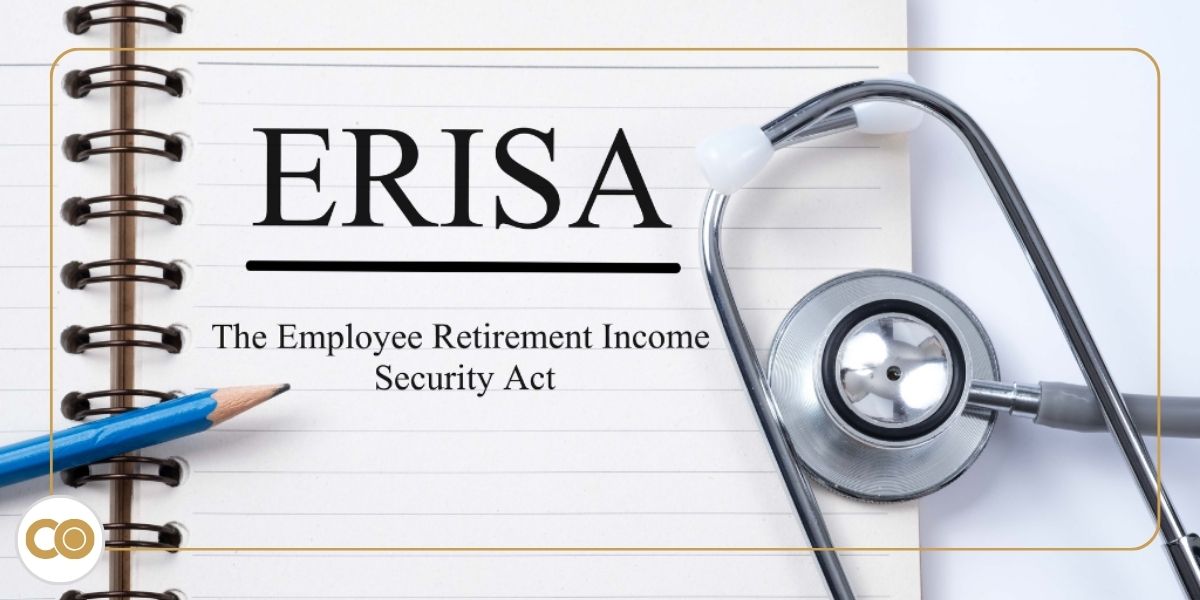What is a Summary Plan Description (SPD)?
March 3rd, 2023 | 5 min. read

As an employer, you value compliance as much as you value your capable employees – both work in favor of your company’s success.
So, when designing an attractive and competitive employee benefits program, compliance with ERISA regulations needs to be as key a consideration as the benefits plan itself.
By creating and distributing a comprehensive Summary Plan Description (SPD) to employees participating in your employer-sponsored benefits plan, you can satisfy both important priorities. Including an SPD will not only spotlight the value of the benefits you offer your employees but also meet ERISA requirements.
Here at Combined, our benefits experts have helped countless employers, just like you, to both assemble an unmatched benefits program and inform their employees of the value behind it. We want to guide you toward a compliant and constructive SPD.
In this article, we will discuss the purpose of a comprehensive SPD. By reading it, you will learn how to create, maintain, and distribute an effective and compliant SPD.
What is a Summary Plan Description (SPD)?
A Summary Plan Description (SPD) is a written overview of important benefits information designed to inform your employees of what is offered under their benefits plan in an easily understood manner.
According to the Department of Labor, “the SPD is the primary vehicle for informing participants and beneficiaries about their rights and benefits under the employee benefit plans in which they participate.”
Who is required to provide a Summary Plan Description (SPD)?
Under the Employee Retirement Income Security Act (ERISA), employers who offer employee benefit plans are required to provide an SPD to plan participants.
As a rule of thumb, this means that if you are a private-sector employer and you offer your employees a benefits plan, then you are required to create and supply an SPD to your employees.
It is important to note that, while insurance carriers and third-party administrators may be contracted to assist with drafting an SPD, creating, maintaining, and distributing an updated Summary Plan Description (SPD) is a designated employer responsibility
What should be included in your Summary Plan Description (SPD)?
As titled, your SPD is a complete summary of the benefits plan you offer. As such, your SPD will be unique to your benefits program.
However, here are some common elements every SPD should include.
Plan details
Your SPD should introduce all general information about the plan:
- The plan name, number, and year
- The plan type (medical, dental, vision, etc.)
- The plan sponsor, EIN, and address (employer information)
- A brief description of the plan, claims process, and appeals process
Plan administration
Your SPD should explain how a participant’s plan works, detailing administrative roles, responsibilities, and financial figures.
Here is what to include under plan administration information:
- The plan administrator or the person or party responsible for managing the plan
- The plan administrator’s contact information (address and phone number)
- The plan’s funding model (fully-insured, self-funded, or level-funded)
- The sources of contributions and contribution calculations
Plan eligibility
Your SPD should communicate both who is eligible to participate in your benefits plan and when they qualify for participation. It should discuss all conditions for eligibility including waiting periods, enrollment periods, and any company-specific eligibility criteria.
It should also include a statement identifying circumstances that may result in disqualification for and loss of coverage under your benefits plan.
Plan benefits
Your SPD should offer a thorough explanation of the benefits available under your plan as well as their associated cost.
Often this will encompass a complete breakdown of health, dental, and vision coverage, life insurance, disability insurance, and retirement benefits and will offer an overview of the cost-sharing provisions for each.
Some key items to include in this breakdown are:
- Network requirements and a list of eligible providers
- Prescription medication coverage
- Preventive services coverage
Plan benefits notices
Your SPD should disclose all appropriate ERISA-required legal notices, like those for the Genetic Information Nondiscrimination Act (GINA), the Children's Health Insurance Program Reauthorization Act (CHIPRA), and the Mental Health Parity and Addiction Equity Act (MHPAEA). The required notice disclosures that you must include in your SPD, depend on the benefits plan you offer.
Which are you required to include in your SPD? View The Department of Labor's Chart of Required Notices to answer the question.
Plan limitations
Your SPD should highlight any coverage exclusions like coverage maximums, pre-existing condition coverage, and out-of-network care restrictions.
Plan amendments
Your SPD should explain the process for plan changes:
- How and when can the plan be amended?
- How and when will participants be notified of changes to their plan?
Plan participant rights
Your SPD should define participant protections and entitlements under the plan:
Here are a few standard plan participant rights to be included:
- A description of the claims and appeals procedures
- COBRA and HIPAA rules and regulations
- ERISA rights
How often should your Summary Plan Description (SPD) be updated?
ERISA requires that an updated SPD reflecting your current plan information must be distributed:
- Every 10 years if no significant changes have been made since the previous SPD distribution
- Every 5 years if material modifications are made to the information available in the SPD during that time period
However, outside of this timeline, ERISA does require that you inform all plan participants of any material changes made to your plan. Rather than distributing a complete SPD for every amendment, you can communicate these changes through a summary of material modifications (SMM).
Furnishing your Summary Plan Description (SPD) – Who, When, How, and Why?
The process for furnishing your Summary Plan Description is outlined and regulated by ERISA.
Who should you provide a copy of your SPD to?
ERISA requires that you automatically provide a copy of your SPD to all plan participants. This includes current employees and former or retired employees who are still eligible for benefits under the plan.
ERISA also requires that you provide a copy of your SPD to plan participants upon written request even if they have already received one.
Additionally, ERISA allows certain individuals who are not plan participants to submit a written request for a copy of your SPD – this includes:
- Employees in a waiting period who are not yet eligible for plan participation
- A plan participant’s covered dependents
- The Department of Labor (DOL)
When should you provide a copy of your SPD by?
To comply with ERISA requirements for SPD distribution, employers must supply an SPD:
- Within 120 days of the plan becoming subject to ERISA standards
- Within 90 days of an employee enrolling in the plan
- Within 30 days of a qualified written request
How should you provide a copy of your SPD?
ERISA guidelines require that the method of distribution for your SPD be aimed at actual receipt and use by plan participants.
The following are ERISA-accepted delivery methods:
- Direct hand-delivery to employees at work
- Administered to employees within a newsletter or company-wide publication
- Sent to employees through the U.S. mail
- Sent to employees electronically if they consent to receive electronic documentation and have work-related computer access
Why should you provide a copy of your SPD?
By now, you know the obvious answer – because it is legally required.
So, just by providing one, you can avoid ERISA compliance violations and the expensive penalties associated with them.
But truth be told, creating, maintaining, and distributing a comprehensive SPD can benefit you, your employees, and your business. How? Read Don't Overlook Your Summary Plan Description (SPD) - 5 Benefits of Your SPD to learn more.
Next Steps to creating your comprehensive and compliant Summary Plan Description (SPD)
You’re here – which means you want to find an intersecting solution for your compliance concerns and your concern for your employees.
Luckily, your SPD can do exactly that – it can show your employees the effort and expense you put into your benefits package while exemplifying ERISA compliance standards.
We’re here – which means our benefits experts at Combined are ready to help you use your SPD as a resource to simultaneously meet both of your aforementioned concerns. And we are not concerned, but instead confident that we can do just that. With years of field experience, we are ready to work with you and create an SPD for your business so you can cross this responsibility off of your to-do list.

|
Schedule an appointment with a benefits specialist to cancel out these concerns with an ideal SPD for your company. |
 |
If you are not yet ready to speak with a team member, you may find these resources helpful: |
This article is not intended to be exhaustive nor should any discussion or opinions be construed as legal advice. Readers should contact legal counsel for legal advice.
Topics:
.png?width=1125&height=426&name=Your%20paragraph%20text%20(5).png)
